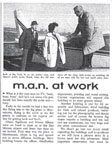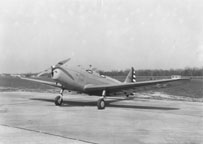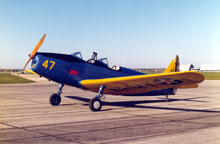March, 1969

Model Airplane News Cover for March, 1969
Fairchild PT-19 Click to Enlarge
Here is what the blurb about the cover has to say:
"... Dan DeString of Midland, Texas uses Daytona, Florida beach as a take-off strip. It does make an excellent flying area if one avoids the salt water! Plane is a modified Sig PT-19 with Merco 0.61 [engine] for power and Kraft proportional system. Dan flew the same plane at the 1968 National Championship ..."
About the Model
Glenn Sigafoose, founder of SIG models was very quick to make kits of national champion airplanes. SIG also sold the best balsa wood and components. The PT-19 kit cost $34.95 back in 1969, which would work out to about $400 in 2010 dollars -- it wasn't cheap. Here are some ads and a blurb from MAN about Editor Schroder's visit to the SIG factory in Montezuma, Iowa. If you look closely, you'll see that Claude McCullough's YAK-18, the subject of the July, 1968 cover, was being offered as a kit.



The SIG kit for the Fairchild PT-19
Click to Enlarge
About the Full Size Airplane
The Fairchild PT-19 was a monoplane primary trainer aircraft that served with the United States Army Air Forces, RAF and RCAF during World War II.


Fairchild PT-19
Click to Enlarge
The original production batch of 275 were powered by the inline 175 hp engine and designated the PT-19. In 1941 mass production began and 3,181 of the PT-19A model, powered by the 200 hp engine, were made by Fairchild. An additional 477 were built by Aeronca and 44 by the St. Louis Aircraft Corporation. The PT-19B, of which 917 were built, was equipped for instrument flight training by attaching a collapsible hood to the front cockpit.
During 1943, USAAF Training Command received a number of complaints about durability issues with the plywood wings of the PT-19 and the PT-23 when exposed to the high heat and/or humidity of training bases located in Texas and Florida. Maintenance officers at the USAAF overhaul depots had been forced to order replacement of the wooden wing sections after only two to three months' active service because of wood rot and ply separation issues. Subsequent to this incident, the USAAF incorporated a demand for all-metal wing sections on all future fixed-wing training aircraft.
Compared to the earlier biplane trainers, the Fairchild PT-19 provided a more advanced type of aircraft. Speeds were higher the wing loading more approximated combat aircraft with the flight characteristics demanding more precision and care. Its virtues were that it was inexpensive, simple to maintain and most of all, virtually "vice-less", the PT-19 truly lived up to its nickname - the "Cradle of Heroes." It was one of a handful of primary trainer designs that were the first stop on a cadet's way to becoming a combat pilot. Thousands of the PT-19 series were rapidly integrated into the US and Comonwealth training programs, serving throughout World War II and beyond. Even after their retirement in the late 1940s, a substantial number found their way onto the US civil register. Around 100 still are flyable today.
Here is a video of a restored PT-19:
Click here to learn more about the Fairchild PT-19.

Click to go back and select another cover.
Counter for the Entire Site (not just this page..)
Home | About Lindy | Last Week's Reviews | Upcoming Events | 1940s Collecibles
The Guide - Establishments - Travel - Accessories
Music | Links | Photo Gallery | Extras | Contact